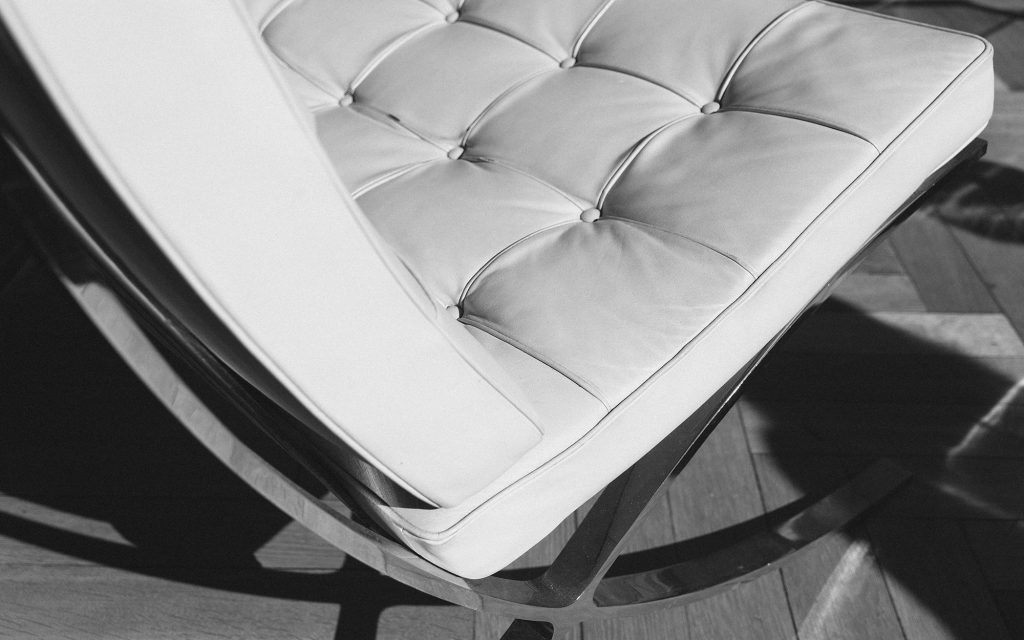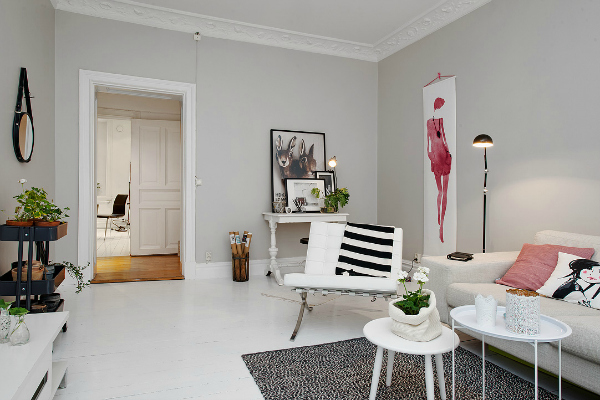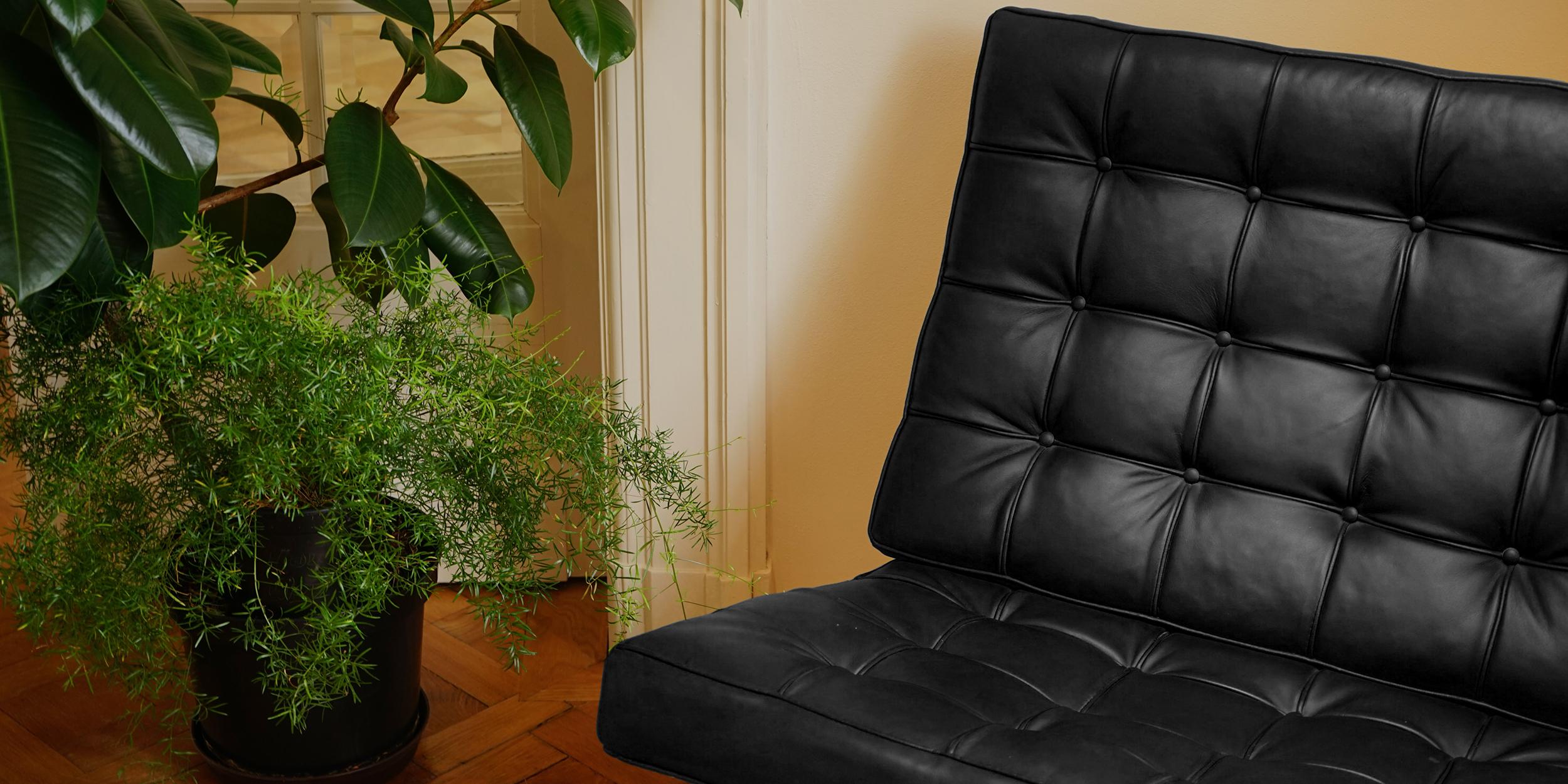The name of Mies van der Rohe is in the top ten of the most well-known in the design sector, and this is not surprising considering his contribution to the world from the projects during his years in the design industry.
In this blog, we are going back in time to talk about the history of the famous Barcelona chair and how it revolutionised the world of mid-century furniture.
About The Designer

The designer of the Barcelona chair was born in 1886 in Germany and died in 1969 in Chicago, Illinois, USA, and he’s a German-born American architect whose rectilinear forms, crafted in elegant simplicity, epitomised the international style of architecture.
He was the son of a master mason who owned a small stonecutter shop, and he used to help his father on various construction sites but never received any formal architectural training. At 15, he was apprenticed to several Aachen architects for whom he sketched outlines of architectural ornaments, which the plasterers would then form into stucco building decorations. This task developed his skill for linear drawings, which he would use to produce some of the finest architectural renderings of his time.
In 1905, at the age of 19, Mies went to work for an architect in Berlin, but he soon left his job to become an apprentice with Bruno Paul, a leading furniture designer who worked in the Art Nouveau style of the period. Two years later, he received his first commission, a traditional suburban house. Its perfect execution impressed Peter Behrens, then Germany’s most progressive architect offered the 21-year-old Mies a job in his office, where, at about the same time, Walter Gropius and Le Corbusier were also just starting out.
During World War I, Mies served as an enlisted man, building bridges and roads in the Balkans. His most important work of these years remained on paper, and actually, these theoretical projects, rendered in a series of drawings and sketches that are now in the New York Museum of Modern Art, foreshadowed the entire range of his later work.
In 1937, after working mainly on projects that were never built, Mies moved to the United States. Soon after he arrived in the country, he gained an appointment as director of the School Of Architecture at Chicago’s Armour Institute (later the Illinois Institute of Technology).
In the 1960s, he continued to create beautiful buildings, among them the Bacardi Building in Mexico City (1961), One Charles Center office building in Baltimore (1963), the Federal Center in Chicago (1964), the Public Library in Washington, D.C. (1967), and, most Miesian of all, the Gallery of the Twentieth Century (later called the New National Gallery) in Berlin, dedicated in 1968.
Although the designer attracted many disciples, his indirect influence was perhaps of even greater importance. He is the only modern architect who formulated a genuinely contemporary and universally applicable architectural canon and office buildings worldwide that echo his concepts. His work eventually came under criticism in the 1970s for rigidity, coldness, and anonymity, but it was his declared choice to accept the nature of 20th-century industrial society and express it in his architecture.
The History Of Barcelona Chair

The Barcelona Chair & Ottoman were designed by Ludwig Mies van der Rohe and Lilly Reich. They were created for the International Exposition of 1929, which took place in Barcelona, more specifically, for the German pavilion in that exposition. They were meant for the Spanish King and Queen to sit on while observing the opening ceremonies.
And yes, 1929 – this chair doesn’t look dated at all! It’s still just as popular, if not more so! The Barcelona Chairs are one of the most iconic and recognised objects of our time, yet they can find their way into any modern home.
As they were created in the era of Bauhaus, they are functional art pieces available to everyone and not just a select few. Nothing says more about an aspiring architect or designer than owning a Barcelona Chair or Barcelona Ottoman. The best place to get the Barcelona Ottoman is obviously Barcelona, and many people not only order Ottomans from the city but also come to visit the birthplace of the stool.
If you’re not looking to spend thousands and thousands of pounds for a Barcelona chair, at Pash Classics, we have The Barcelona Chair replica available in Italian leather (antique brown, black, brown, cream, dark brown, red, tan brown and white) and Pony Hide (black/white and brown/white) with or without the Ottoman. Even more, we also stock The Barcelona Daybed, another stylish and elegant contemporary furniture design icon.




